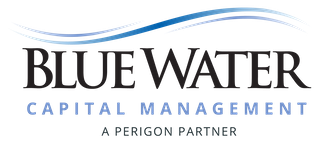
Two Ways to Instantly Pay Off Your Debt
If you are one of many Americans that have woken up only to realize you have a large amount of retirement savings and a large amount of debt, you are not alone. We’ve been thinking a lot about this recently and in conjunction with the recent passage of the Federal CARES Act on March 27, 2020, we have an easy plan to help you pay down your debt or student loans. Let’s take advantage of this opportunity together!
The purpose of the new CARES Act is to create more flexibility in retirement accounts such as IRAs and 401(k) and provide support to Americans that are both directly and indirectly affected by COVID-19. After doing some research we have discovered that If you go about it the right way, the new rules present a wonderful opportunity to get rid of that high interest credit card debt or pesky student loans.
Option 1: Take a Distribution From An IRA
If you have an IRA you may take a distribution of up to $100,000, penalty free, and then spread the taxes out over a three-year period. For example, if you were to take a $30,000 distribution from your IRA this year, you would report $10,000 in income on your federal return for 2020, 2021, and 2022. You may however decide to pay all the taxes in 2020 if you wish. While this presents a great opportunity to access funds to pay down debt, you will still be obligated to pay taxes on the distribution.
Option 2: Take a Loan From Your 401(k)
Employer sponsored plans, most popular being the 401(k), under the CARES act may elect to allow for a special loan provision. This provision allows a plan participant to take a loan out of up to $100,000 (an increase from $50,000) and defer the repayment of the loan for up to a year. At that point the normal loan provisions apply, and a participant must pay back the loan over a five-year period. This distribution is both tax and penalty free as long as the loan is paid back over the specified amount of time.
Taking a distribution from your employer-sponsored 401(k) plan can be much more favorable (than taking from an IRA) as you can defer taxes up to almost six years and in most cases, not have any tax liability due! But the question is, what if you do not have enough money in your 401(k) yet? Maybe you just started a new job, or you haven’t been at the company for enough years to build up the savings. This is when you turn to your IRA. Most employer plans will allow you to roll your old 401(k) or current IRA into the new plan. If so, it’s time to take those IRAs and old plans and get them into the plan you have now. Once all your money is consolidated into your current plan, you can then take a loan out and pay off that bad debt like credit cards or personal loans.
There are potential downsides to taking distributions such as investment opportunity lost and inability to pay off loans in the specified period. Therefore, it is important you consult with your investment fiduciary prior to executing any of the financial maneuvers described above. If you have any questions or would like further financial guidance please do not hesitate to reach out to us at bluewatercm.com. Stay safe and we hope to hear from you soon!
-Tom Brown CRPS®, Partner, Wealth Manager and Director of Retirement Plans, Blue Water Capital Management, LLC
Blue Water Capital Management, LLC is a Syracuse, NY – based, SEC Registered Investment Adviser, specializing in retirement plan consulting, individual wealth management and 3rd party asset management.

